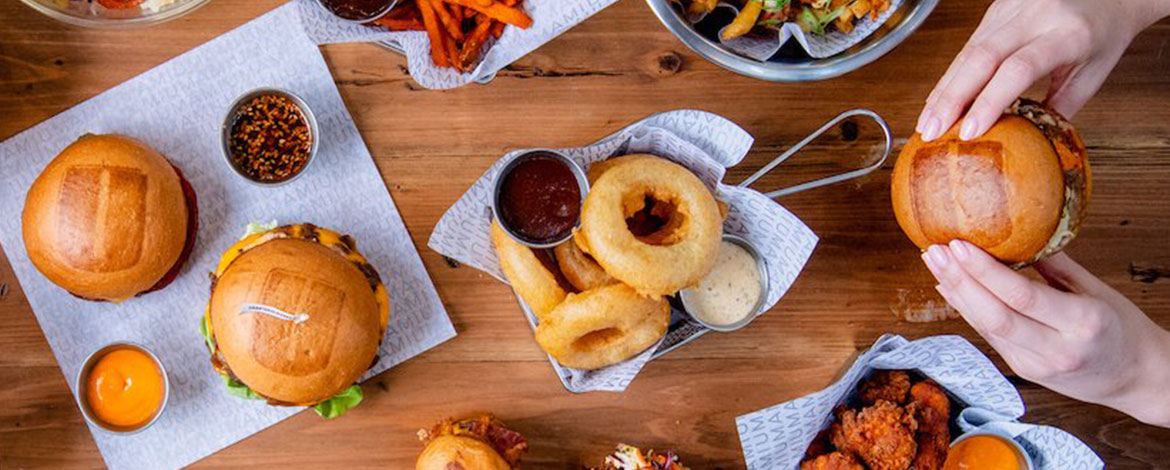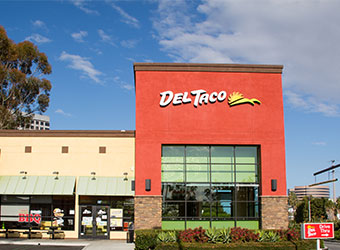Image Credit: Umami Burger
Some people might tell you the restaurant industry is at a crossroads. Adam Rinella, however, will be the first to tell you that it’s actually at the intersection of about a dozen crossroads.
“It’s really exciting to be at the end of the tunnel and seeing the light,” Rinella, the Senior Vice President of Development at C3 says after a year lost to COVID-19 lockdowns, yet one that has afforded smart industry execs the time to plan a path forward. “There’s a pent-up demand right now. We’re seeing sales in the markets that have re-opened early — Texas, Florida — that are 20 percent higher than they were in 2019. People want to go out, they want to go to restaurants and get back to regular life.”
A division of lifestyle hospitality company SBE, C3 spent much of 2020 navigating the unprecedented pandemic — while simultaneously exploring opportunities via ghost kitchens, celebrity influencers, software development and food halls that Rinella sees as potential ways to capitalize on this “pent up demand” and emerge with a business stronger, smarter and more nimble than ever before.
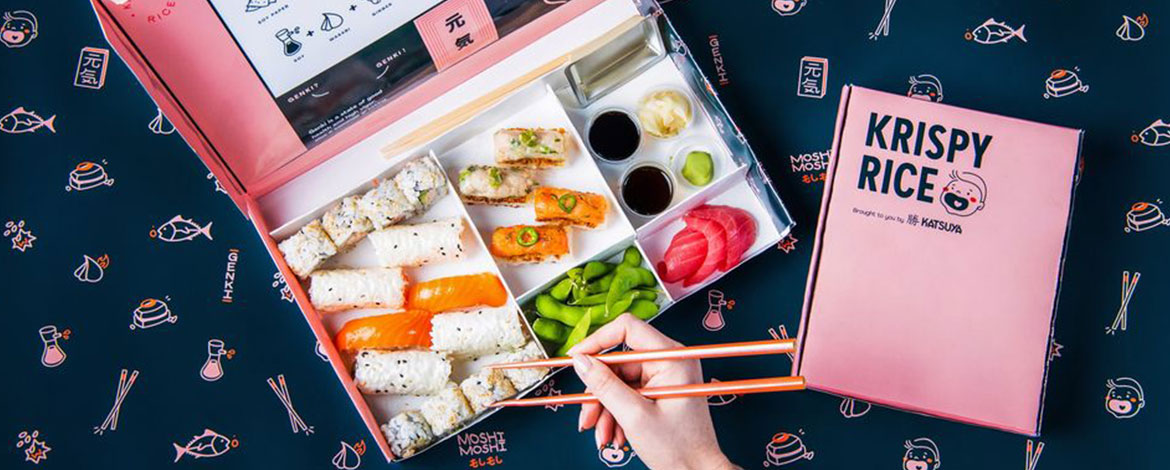
Image credit: Krispy Rice
Maintaining the culture
“We operate 20-plus brands, and we do that through a variety of kitchens,” Rinella says of a C3 roster list that includes big names like Katsuya and Umami Burger, paired alongside rapidly growing delivery-only concepts (at least for now) like Sam’s Crispy Chicken, Plant Nation and Krispy Rice — which saw triple its expected business during the shutdown and currently has 40,000 followers on its lively Instagram without so much as a single location.
Even before shutdowns accelerated mass adoption of delivery apps, C3 experimented with “ghost kitchens” and “dark kitchens,” but the company quickly realized such departures didn’t promote the sort of culture it wanted to embrace.
“We realized pretty fast that we’re in the hospitality industry, and when you eliminate the front-of-house piece, you lose that ability to connect with the customer,” he explains. “It was kind of a dismal operation.”
So instead, they pivoted to a plan where they would use existing kitchens in brick-and-mortar restaurants and hotels, simply setting up additional stations for the delivery-only brands. But even that plan, early on, had its hiccups.
“We figured out something really quickly,” Rinella laughs, remembering the confusion as drivers arrived at Umami Burger looking for a sushi restaurant. “The first day was a disaster. We had all these drivers showing up to the location, and they would put into the app ‘this restaurant doesn’t exist, it’s not here.’ We realized you’ve got to have some kind of way of finding signage for the drivers so they know they’re in the right place. We very quickly came up with a system of A-frame signs, wall signs and parking spaces.”
Now that those initial kinks have been worked out, C3 has positioned itself to thrive. Today, virtual and brick-and-mortar brands share space in their vibrant kitchens — and instead of retro-fitting such spaces to make room, future kitchens will be constructed with these shared-space learnings in mind.
“Now, we’re designing from scratch versus converting existing kitchens, and we’re designing them in a way that will cross-utilize equipment across brands and be set up in a way that considers which concept can be set up next to which concept — which will allow cross-utilization of equipment, labor and even ingredients,” he explains. “We’re getting things down to a science, and focusing on using every square inch of the kitchen to accommodate five, six, seven brands rather than just converting from an existing, single kitchen in a traditional restaurant.”
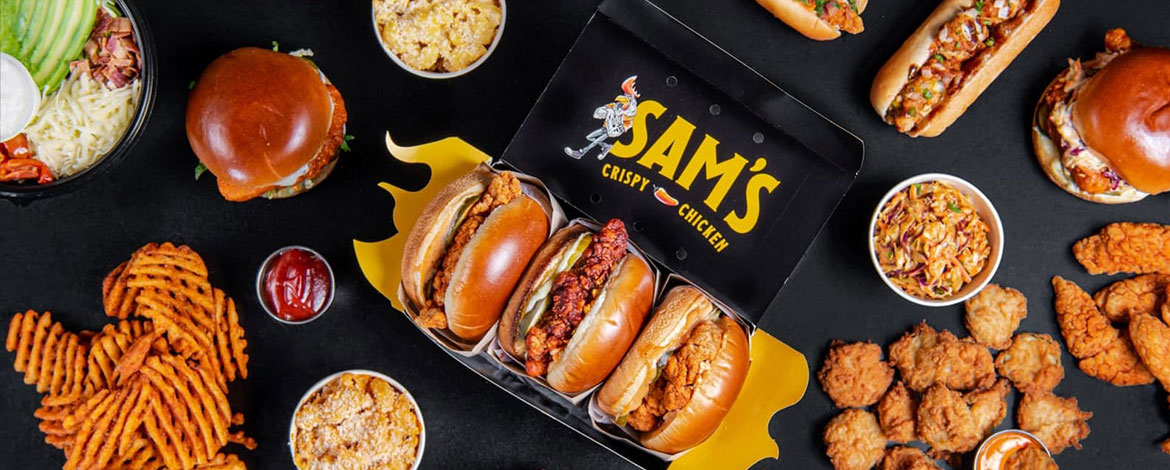
Image credit: Sam's Crispy Chicken
Friends in high places
When SBE began as a nightclub company in the early 2000s, founder Sam Nazarian learned how to harness the power of celebrity. Such lessons have carried over to SBE, and today the company’s well-established relationships with influencers are paying off.
“There are so many choices when you go on DoorDash or Postmates; you have to know how to stand out,” Rinella explains. “One thing that has been brought along from our legacy SBE days is the social influencers, the celebrities and other things that were part of the nightclubs being very popular. Now, when we’re building these fast-casual brands, whether it’s through a ghost kitchen or brick-and-mortar, if you have huge celebrities and social media influencers endorsing your brand through their social media, that can be a huge differentiator.”
Hollywood power couple John Legend and Chrissy Teigen have professed their love for Krispy Rice, with Teigen telling her 34.7 million Instagram followers “you must order from them, and do not skip the shrimp!”C3 has also been working with the likes of Justin Bieber and Diplo.
“Sam has genuine friendships with these people; he’s known them forever, so he introduces them to the food,” says Rinella. “They’re not going to endorse something unless they think it’s of quality, and it’s on-brand for them ... it’s an intrinsic quality of C3 that we attract those people and they want to be a part of it.”
With such connections in mind, Rinella watched closely as Jimmy Donaldson — the 22 year old YouTube sensation known as “Mr. Beast” — recently sold more than a million burgers during the pandemic by launching a ghost kitchen chain called MrBeast Burger in partnership with Planet Hollywood founder Robert Earl. The takeaway was clear: to successfully target Gen Z, look to their favorite YouTubers for branding opportunities.
“That was a huge success; people would order the food because they love Mr. Beast,” says Rinella. “So, we went out and partnered with several really big influencers ourselves, YouTubers with between 5 and 30 million subscribers. We’ll be creating brands with these people to do something similar; if you follow them on YouTube or Instagram, they’re going to have these little mini-brands based around them and the food they love, and people will be able to order that food through our kitchens all over the country.”
The difference, Rinella believes, will come from their high-quality brands. With C3 staff trained to not only create memorable food but also delectable food, the company is in a position to make such partnerships not only exciting, but also result in food actually worth eating.
“The way our kitchens are set up, with the equipment and skillset of our back-of-house employees, we’ll be able to produce everything at a very high level where it’s very good and craveable and people will want to re-order it,” he insists. “It will be the same sorts of followers, Gen Z marketing, but we’ll be hoping to execute these partnerships at a much higher level.”

Image credit: Plant Nation
Deck the halls
As the world reopens, Rinella has an eye on two additional emerging fronts: proprietary technology and single-ownership dining halls.
“We’ve created our own technology called CitizensGo, it’s a marketplace that launched a few weeks ago available on the web or via app,” he says. “You can build one cart from several different brands, have one financial transaction, and then have all the food come to you at once.”
If you’re looking to grab lunch for your family or office, CitizensGo eliminates the need to order from two or three different restaurants to satisfy everyone’s cravings. For the customer, the food arrives at the same time, paid in one easy transaction. For C3, instead of giving a sizeable percentage to a delivery app, they can negotiate a more reasonable fixed amount for last mile delivery.
“The fixed rate makes it more profitable and easier to plan. In addition, the data and customer account becomes your own, so you can get them into your loyalty programs and send them offers when you need to increase interaction,” Rinella says. “That’s the big pivot for us, trying to drive people through our own technology and originating the customer on our platform.”
But, there is still something to be said for dining in. So Rinella is always looking to carefully balance the tangibility of real-world locations with the flexibility of virtual brands.
“Rather than individual brick-and-mortar restaurants for all these brands, we’re building food halls,” he says of locations in various states of development in markets like Manhattan, Atlanta and Seattle. “We can say to a landlord, instead of negotiating with ten different tenants for ten different stalls and ten different rent checks, we have all these amazing brands we want to deploy in this community.”
The food halls give customers the type of choice they desire, and C3 the sort of opportunity to fine-tune plans on the fly that they embrace.
“We spread our brands throughout these stalls to make it a real brick-and-mortar place for these brands to live. If for some reason one of the brands doesn’t work in that community, we just quickly flip that stall to a different brand and see if that works any better,” Rinella explains. “So, the food is being deployed somewhere people can look and touch and feel, while we’re also putting those brands in the back of these restaurants and delivering others via virtual kitchens.”
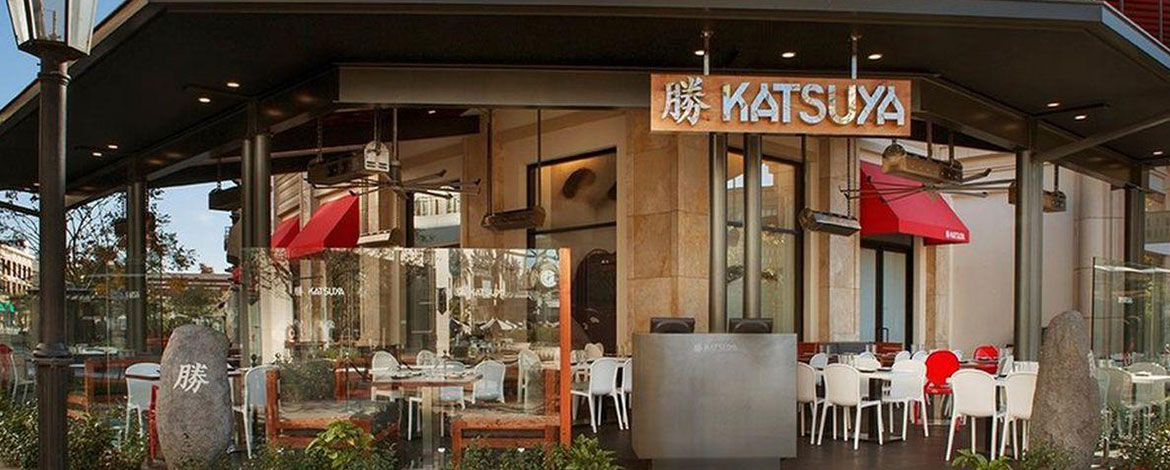
Image credit: Katsuya
Maximizing equipment, minimizing delays
With so many crossroads to be navigated, and so many bold ideas moving the company forward, C3 is thankful for a Facilities Management solution that empowers them to manage their equipment, find footing in new markets and increase operational efficiency.
“Our in-house facilities techs across the country are set up with vendors in Ecotrak,” Rinella explains. “For managers, that gives them the ability to send work orders to an in-house technician or vendor using a standardized system and protocols, whether they need an in-house person to come out, or a vendor.”
As Rinella and his team move from their California strongholds to expansions in Chicago, Austin, Miami, Atlanta and other markets, they also find it immensely helpful to have a system that recommends proven, competent local vendors.
“If it’s a new market, we’re able to get feedback and recommendations from Ecotrak on vendors in that market, and we can onboard them so that right away, when the store opens, the restaurant managers have the ability to place work orders if they’re having some sort of trouble with facilities,” says Rinella.
It also empowers staff at all levels to keep things moving in the right direction. “The facilities manager becomes an air-traffic controller, seeing everything and evaluating work orders as they come in, giving feedback to the managers and helping them troubleshoot, managing the technicians and the vendors,” he adds. “Ecotrak is a huge tool for being able to see the 30,000 foot view constantly, while at the same time managing individual work orders and problems in real time.”
With palpable excitement around the re-opening restaurant industry, and customers eager to interact with brands both established and new, virtual and otherwise, C3 is re-opening businesses with the confidence that they’re in a position to succeed.
“We’re growing incredibly fast,” says Rinella. “Having Ecotrak as a tool on the facilities side allows us to scale quickly.”
